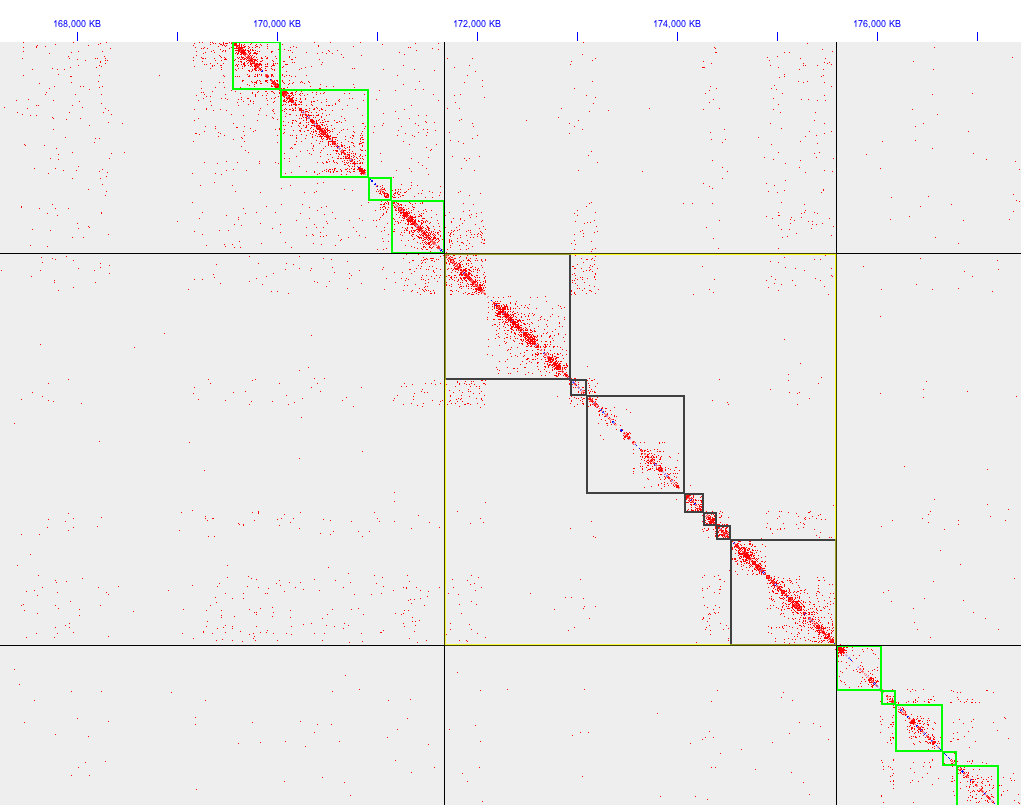

- SEQUENCHER CONTIG ASSEMBLY IMVERTED FULL VERSION
- SEQUENCHER CONTIG ASSEMBLY IMVERTED ARCHIVE
- SEQUENCHER CONTIG ASSEMBLY IMVERTED DOWNLOAD
Purchased versions of Sequencher have a physical or network key that enable it to run in full mode.The demo version will do almost everything the full version will, except such things that are vital to performing research such as printing, saving, and exporting analyses. Using Sequencher We are using the demo version of Sequencher. Eukaryotic genome projects and genome sequencing centers generally use more industrial-strength (and less user-friendly) packages of programs. Sequencher Sequencher is one of the more popular programs for single-lab and small genome sequencing projects.
SEQUENCHER CONTIG ASSEMBLY IMVERTED ARCHIVE
This data is from the trace file archive at NCBI, and the data was originally produced at the DOE Joint Genome Institute. I have provided a compressed file with 265 trace files that are part of the whole genome sequence (>134,000 traces) of the fascinating bacterium Geobacter metallireducens. Instead, we will use some data that has already been partially pre-processed – we will perform the final necessary processing to get the final usable data. However, we will not be running these programs.
SEQUENCHER CONTIG ASSEMBLY IMVERTED DOWNLOAD
You are invited to visit the UW-Seattle site to learn more or download the programs. Variants of this method have been incorporated into other computer packages.

These programs, Phred, Phrap,and Consed are the most widely used for sequence data analysis. of Washington, Seattle is most commonly used. For genome sequencing, a suite of tools written by researchers at U. There are a variety of programs that will read these files and perform some “post-processing” of the data, often a re-inference of the linear DNA sequence and assignment of quality scores to the “call”, or assignment of nucleotide at each site. There are a small variety of formats for storing and presenting this data, and the most popular one is the Standard Chromatogram File, or scf. Just about any DNA sequencing machine will infer the linear DNA sequence from the raw fluorescence data. By the most common methods, this results in a “trace” file that records the wavelength of the DNA fragments as they pass the laser that excites the dye. The dominant method of DNA sequencing involves labeling the DNA with four different fluorescent dyes, separating the DNA by electrophoresis, and measuring the intensity of the fluorescence to determine the base order. In the last 30 years, DNA sequencing has evolved from a laborious process in which one was fortunate to produce a few thousand nucleotides of good quality data after a week of hard work, to one in which one simply sends out a plate of samples to a core facility and produces several thousand nucleotides of data in a few hours (or thousands of kilobases of a data at a large facility). In a sense, we are now taking a step back to what got it all started – DNA sequencing and the reconstruction of (almost) entire genomes. So far in this class you’ve been exposed to some the most recent advances in genomics, proteomics and bioinformatics. Rob Edwards who initially developed this module and whose work I have heavily utilized in developing this module. Genome Assembly and Annotation My thanks go to Dr.


 0 kommentar(er)
0 kommentar(er)
